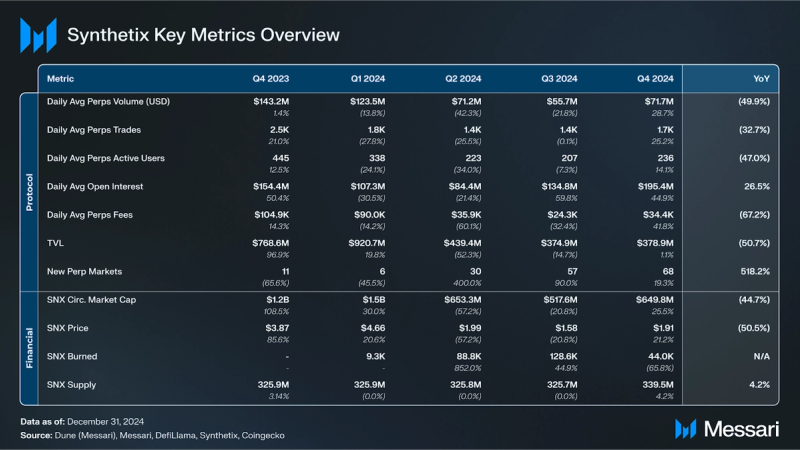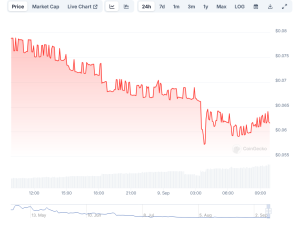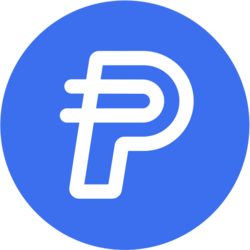Key Insights
- Synthetix underwent a governance overhaul in Q4 2024, transitioning to a single Spartan Council structure, streamlining decision-making processes and increasing governance effectiveness.
- Synthetix acquired Kwenta and TLX for $13.2 million and $4.0 million, respectively, expanding its derivatives offerings.
- Open interest hit a yearly high on November 21 of $367.1 million. Daily average OI was $195.4 million, up 45% QoQ from $134.8 million.
- Synthetix launched 68 new perp markets, 24 of which were for assets never before seen on the platform.
- Daily average perp volumes increased 29% QoQ, culminating in an average daily perps volume of $71.7 million in Q4.
Primer
Synthetix (SNX) is a decentralized derivatives protocol that offers users access to synthetic assets, perpetual futures trading, leveraged tokens, and vault strategies. Synthetic assets track the price of external assets through oracles like Chainlink, Pyth, and Uniswap V3 TWAP. Users can trade in both spot and perpetual futures (perps) markets for synthetic assets. SNX is the native protocol token, used for governance and as collateral backing for the protocol’s liquidity.
Synthetix has two prominent versions being used today, V2 and V3. Synthetix V2 primarily uses SNX as collateral for staking and issuing synthetic assets, whereas V3 introduces a more modular system that supports multiple collateral types. V3 was initially deployed to Base in Q2’24 and subsequently deployed to Arbitrum in Q3’24. Synthetix has expanded the collateral types now include cbBTC, tBTC, cbETH, WETH, USDC, and yield-generating assets like static aUSDC, Lido’s wstETH, and Ethena’s USDe. Synthetix Perps is the protocol’s leading product. The DAO delegates governance to a seven-member council – the Spartan Council. Four of the seven members are elected by SNX holders, with the other three members hired on by the elected members.
Website / X (Twitter) / Discord
Key Metrics
Protocol Analysis

Perpetual Futures

Daily average perpetual futures volume increased 29% from Q3’s $55.7 million, with Q4 seeing an average of $71.7 million worth of perp trading per day. As for YoY, daily average volume was down 50% from $143.2 million in Q4’24. Since launching in Q2, adoption of Synthetix V3 perps slowed in Q4, with V3 perp volumes decreasing 38% QoQ. This quarter, Synthetix’s perps volume remained flat QoQ as a proportion of all onchain perps, with $6.6 billion in volume representing approximately 0.9% of all onchain perps volume ($740.5 billion) in Q4.

Q4 solidified a shift in user preference regarding the preferred perp market to trade, with SOL’s perp volume increasing 53% QoQ and closing Q4 with $2.5 billion in volume. Last quarter, BTC edged out SOL as the top perp market on Synthetix by a 5% difference in perp volume. However, in Q4, the SOL perp market outperformed BTC by 13%. Additionally, other perp markets grew 74% QoQ, showcasing Sythetix users’ preference for more niche perp markets outside of BTC, ETH, and SOL.

In that vein, Synthetix had 68 new perp markets in Q4, up 19% QoQ from Q3’s 57 new perp markets. The majority of new perp markets already existed on Synthetix V2, however, 24 of them were completely new markets never before seen by either Synthetix version. The new markets are a result of the passing of SIP-387, which clearly defined a path for listing new assets: the asset must have a Pyth oracle price feed and be listed on Binance Perps. This ensures each market can be balanced via funding arbitrageurs to protect liquidity providers from imbalanced market skew.
Activity

Activity metrics trended higher collectively in Q4 after decreasing throughout 2024. The daily average number of perp trades increased 25% QoQ, rising from 1,400 to 1,700 in Q4. This growth was led by 59% QoQ growth in the number of trades that occurred on Synthetix V2. On a YoY perspective, daily average trades decreased 33%, declining from 2,500 in Q4’23.

Average daily active users (DAUs) increased 14% QoQ, increasing from 207 to 236 in Q4. Average DAUs are down 47% YoY, from 445 in Q4’23. Average DAUs increased across both Synthetix V2 and V3, rising 12% and 19% QoQ respectively. This suggests that power users represent a larger share of trades on Synthetix. It should be noted that Synthetix V3 has not been deployed to OP Mainnet and, as such, represents different execution layers (Base and Arbitrum).
Total Value Locked

Total value locked (TVL) is a measure of the available onchain liquidity on Synthetix at a given moment. Synthetix TVL remained flat QoQ, only growing 1% in Q4. TVL peaked in Q4 at just over $600 million before closing Q4 at $378.9 million. Although TVL is an important metric, it is not the sole determinant of success for a perp DEX.
Open Interest

Open interest (OI) represents the total value of active, unsettled derivatives contracts at a given time. For Synthetix, OI indicates the dollar amount of all currently open perp contracts. Higher OI reflects both increased risk, as more funds are tied up in funding active positions, and strong demand for Synthetix Perps, as it shows users are actively opening and maintaining perp positions on Synthetix.
By the end of Q4, OI was $67.5 million, down 60% QoQ from $166.7 million. OI also set a new ATH of $376.1 million on November 21 as volatility was heightened during the month of November. For the entire quarter, the daily average OI was $195.4 million, up 45% QoQ from $134.8 million. OI began trending up leading up to the US presidential election on November 5 ($208.9 million in OI on election day). The election of Donald Trump caused a rally in crypto markets. Alongside the price rally, open interest also began to rise as traders increased their risk appetite for leverage.

As for perp markets, SOL had the highest average open interest for the first time this quarter. Its monthly average open interest in Q4 was $84.9 million, up 115% QoQ from $39.4 million in Q3. Furthermore, SOL represented 43% of the average open interest for Q4. BTC saw the second-highest average OI this quarter, with its perp market averaging $77.6 million in open interest in Q4. Combined, SOL and BTC were 83% of the average open interest in Q4. Conversely, the ETH perp market average open interest declined for the second straight quarter, partially due to ETH price struggling relative to the rest of the crypto market in Q4. Its average open interest was $15.2 million, down 27% QoQ from $20.7 million.
Fees

Traders incur a maker fee when their order reduces market skew, which refers to the imbalance between long and short positions in the market, and a taker fee when it increases skew. The maker and taker fees are set on a per-market basis and can be found on the trading interface. These trading fees are called exchange fees. Traders may also encounter liquidation fees if their collateral value is no longer enough to appropriately support their perp position.
The Synthetix OP Mainnet deployment continues to generate nearly all of the perp exchange and liquidation fees across all Synthetix deployments. Exchange fees on OP Mainnet are not paid as a dividend but rather by burning sUSD, which reduces debt for SNX stakers. However, after SCCP-373, Synthetix perps exchange fees are as so:
- 20% to V2 debt burn
- 20% to Synthetix integrators (e.g. Cyberdex)
- 60% to Synthetix V3 LPs
For Q4, perp exchange and liquidation fees on OP Mainnet totaled $2.8 million, a 64% QoQ increase from $1.7 million in Q3. Conversely, fees on Base declined 47% QoQ, closing Q4 with $268,100 in fees for Q4. The Arbitrum deployment of Synthetix had accumulated negligible fees since going live at the end of August 2024, until Q4, when it amassed $69,100 in fees.
Collectively across all Synthetix deployments, daily average fees were up 42% QoQ, averaging $34,400 per day in Q4. As for YoY, daily average fees were down 67% from the daily average of $104,900 in Q4’24.

When looking at solely perp exchange fees (trading fees), the SOL perp market brought in the most with $988,900 in exchange fees in Q4, up 52% QoQ. The BTC perp market brought in the second most exchange fees this quarter at $748,900, up 22% QoQ. ETH fees decreased by 31% QoQ, as Synthetix perp users increasingly preferred to trade other markets in Q4.
Financial Analysis

Market Cap & Supply

During a market-wide rally, SNX’s circulating market cap rebounded in Q4, increasing 26% QoQ from $517.6 million to $649.8 million. Additionally, the price of SNX rose 21% QoQ from $1.58 to $1.91, signaling that the market was able to absorb a roughly 4% SNX supply increase this quarter. The SNX supply that was minted this quarter was used to finance the two strategic acquisitions the Synthetix DAO completed this quarter (more on this below).
SNX Burns

In December, the Synthetix DAO voted to pass SCCP-373 which changed the perp fee structure to better compensate LPs. This change stopped the burning of SNX, which previously took 40% of fees generated from Synthetix V3 perp trading on Base and allocated them to buying back and burning bridged SNX. In Q4, SNX burned decreased by 60% QoQ, from 129,000 to 44,000 SNX. The SNX burned was valued at $80,000, bringing the lifetime total of SNX burned to $563,000.
Qualitative Analysis
Governance Overhaul
This quarter, under SR-2, DAO governance was streamlined by merging the existing councils into a single, seven-member Spartan Council with equal voting power per member. Four of the seven seats would be directly elected by SNX holders, with the remaining three seats being hired on by the elected council members. Each elected position would have a six-month term, with elections held semi-annually in the first two weeks of April and October. The elected seats would consist of three advisory seats and a treasury seat. The hired seats would consist of a strategy, operations, and technical seat. All council decisions would require a 4/7 multi-signature approval, with all treasury-related actions requiring approval from the treasury council seat. For the first term, each council member will receive a stipend of 2,000 SNX per month, with the potential for a new incentive structure afterward.
The founding constituents of the new Spartan Council:
- Strategy Seat: Benjamin Celermajer
- Operations Seat: Cav
- Technical Seat: Brent Maxwell
- Treasury Seat: coKaiynne
- Advisory Seat: Kain Warwick (Co-founder)
- Advisory Seat: Jordan Momtazi (Co-founder)
- Advisory Seat: Spartan Glory
Kwenta Acquisition
On November 7, 2024, Synthetix announced it had acquired its ecosystem-leading perps trading platform Kwenta. The acquisition was a token-for-token transaction approved by both DAOs via SIP-411 and KIP-138. KWENTA token holders received SNX for their KWENTA at an exchange rate of 17 SNX for 1 KWENTA. This exchange rate represents a 19% discount to the 30-day average KWENTA/SNX ratio and values Kwenta at approximately $13.2 million. This acquisition was financed by inflating the SNX supply by 9.0 million SNX. KWENTA token holders will experience a 3-month lock period followed by a 9-month linear vesting period, during which they can redeem their vested SNX at any time. Kwenta and Synthetix treasuries will not convert their tokens and instead burn them. The lock period for all holders begins on November 15th, 2024, regardless of when tokens are sent to the contract, and any KWENTA not converted within 2 years will be forfeited.
This strategic move aims to consolidate the Synthetix and Kwenta communities and reclaim control of its dedicated front end, unifying strategic priorities and improving brand recognition. The acquisition not only streamlines the user experience and operational efficiencies but also opens up new growth opportunities and enhances B2B offerings, positioning Synthetix to deliver a premier decentralized derivatives protocol and drive more value for SNX stakeholders.
TLX Acquisition
Synthetix announced the acquisition of TLX, a leading leveraged token platform, in a token-for-token deal approved under SIP-412 and TIP-14. TLX token holders received SNX for their TLX at an exchange rate of 1 SNX for 18 TLX. This exchange rate represents an 8% discount to the 30-day average TLX/SNX ratio and values TLX at approximately $4.0 million. This acquisition was financed via the inflation of the SNX supply by 2.6 million SNX.
TLX holders converting to SNX will undergo a 1-month lock period followed by 4 months of linear vesting, during which vested SNX can be redeemed at any time. TLX tokens from both Synthetix and TLX treasuries will be burned rather than converted. The lock period began on December 5th, 2024, and any TLX not sent to the conversion contract within 2 years will be forfeited. After the 5-month lock/vest, 700k sUSD will be distributed to the TLX community, with an approximate daily accrual of around 4,635 sUSD (adjusted based on the vesting period length) allocated pro rata based on each holder’s balance in the conversion contract. Users withdrawing SNX will still earn sUSD, but their daily pro-rata share will decrease. All earned sUSD will be distributed within a week after the final vesting day, before May 12th.
This strategic move is a key step in Synthetix’s plan to become a primary product issuer on its decentralized liquidity layer. Synthetix aims to achieve this by launching a suite of vault products, with leveraged tokens as its first category. With TLX’s six-month performance history as a foundation, Synthetix looks to accelerate time to market for an improved V2 leveraged token system while unlocking new growth, revenue, and branding opportunities.
Other Developments
Recognizing the importance of user experience in driving adoption, Synthetix made upgrades to its interface and user-facing features:
- Mobile Trading (Dec. 13): In partnership with Mass, Synthetix brought Synthetix perps to mobile devices. This integration allowed users to trade with up to 25x leverage, access liquidity, and enjoy features such as on/off-ramping and gasless transactions, all while maintaining full self-custody.
- Synthetix Exchange Relaunch (Dec. 17): The Synthetix Exchange underwent an overhaul, with a new version featuring an improved UI, deep liquidity, and low fees.
- Gasless Trading (Dec. 20): Synthetix introduced gasless 1-click trading on the Base blockchain, reducing friction for users.
- Multi-collateral perps (Dec. 17): Synthetix launched multi-collateral perps for Synthetix V3, allowing users to deposit Wrapped Bitcoin (tBTC & cbBTC), Ethereum (cbETH, WETH, wstETH), and Ethena USD (USDe) for use as perp collateral.
- Coinbase 50 (Nov. 12): This quarter SNX became a part of the Coinbase 50 Index (COIN50). This index tracks the 50 largest and most liquid digital assets that meet their eligibility criteria.
- Centralized Hub (Dec. 23): Synthetix launched a new website to align its entire product lineup in one place. This centralized hub allowed users to easily access over 90 Perps markets, explore liquidity opportunities through the Earn feature, and trade Leveraged Tokens for popular assets.
These technical innovations and performance optimizations implemented by Synthetix in Q4 2024 enhanced the protocol’s capabilities. The changes focused on gas efficiency, liquidity provision, user experience, and platform functionality.
Arbitrum Sunset
After the quarter ended, Synthetix governance passed SCCP-380 which effectively sunset the Synthetix deployment on Arbitrum. This is part of its strategic pivot to vertically integrate its trading platforms. This decision, made to focus resources on delivering a more liquid, reliable, and user-friendly derivatives trading experience on the Base network, means that while existing positions can still be closed or reduced, new positions cannot be opened on Arbitrum.
Additionally, USDx will be sunset, with a no-slippage swap wrapper provided for conversion to USDe. To support liquidity providers during this transition, extra LP incentives will be offered on Base, and new yield opportunities will be made available. Overall, these moves are part of Synthetix’s broader strategy to consolidate its ecosystem and enhance its product offerings as it moves toward its own Superchain deployment, Snaxchain.
Closing Summary
This quarter was marked by monumental governance changes to Synthetix. The DAO has moved to a single Spartan Council, which is partly elected and partly hired. This council addresses past governmental inefficiencies and is collectively unified under a revamped vision for the future. The new governance structure got right to work acquiring both Kwenta and TLX for a token-for-token deal approved. These deals help Synthetix vertically integrate and expand its product offerings.
Open interest experienced a yearly high this quarter, peaking at $376.1 million on November 21, and closing the quarter at $67.5 million in OI. Perp volumes increased 29% this quarter to $6.6 billion, while TVL remained flat QoQ, only growing by 1%. On the other hand, the daily average OI grew 62% this quarter to $378.9 million. Average DAUs increased 14% QoQ and average daily trades increased 25% QoQ. The newly streamlined and simplified process for creating new perp markets on Synthetix enabled 24 net new markets to come online in Q4. The circulating market capitalization of SNX grew 26% QoQ, closing Q4 at $649.8 million.





















